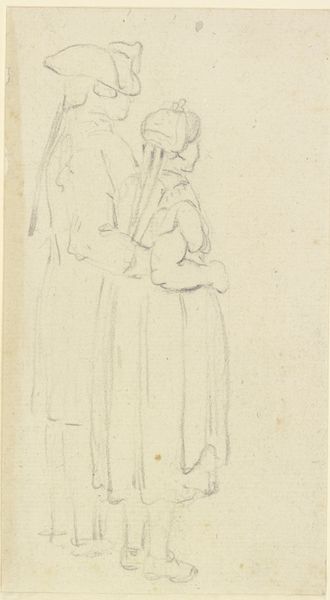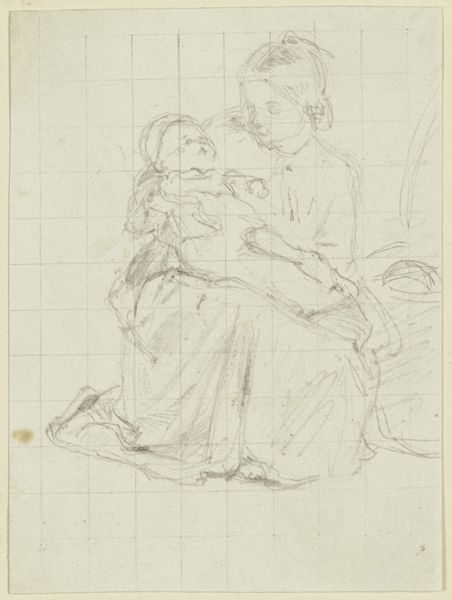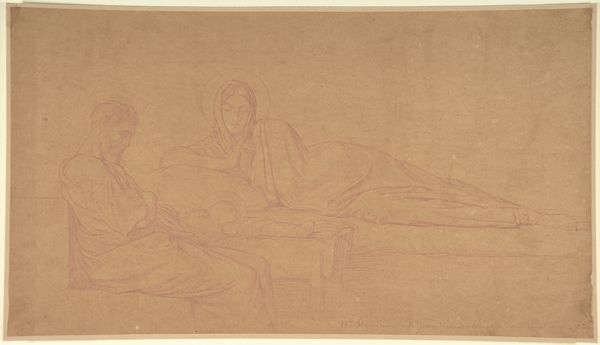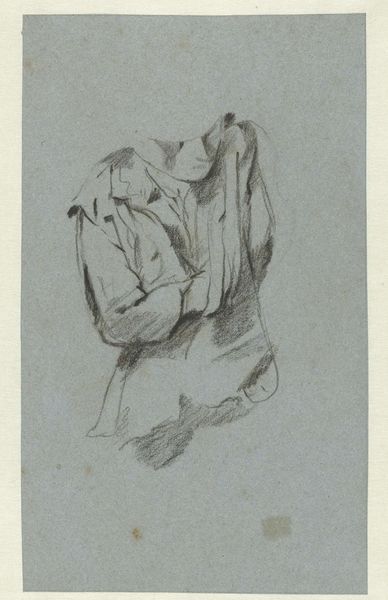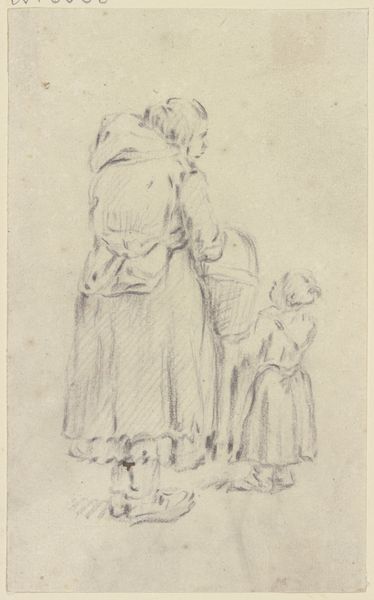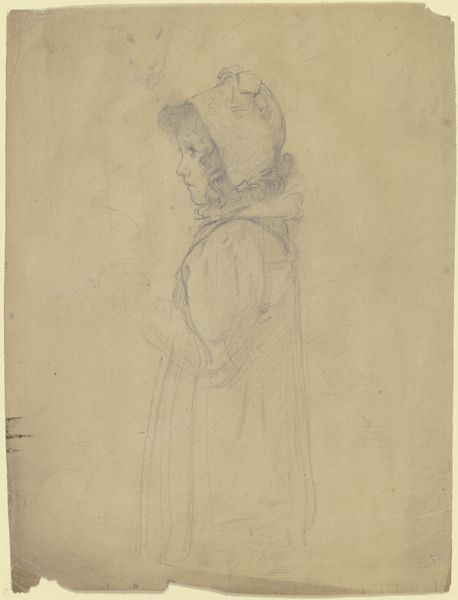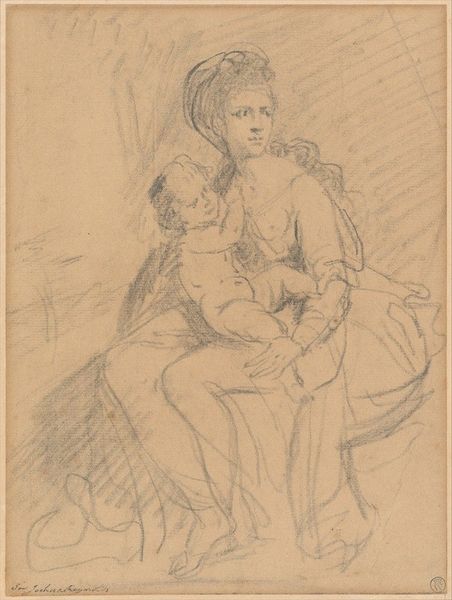
Sitzender Hartmut, an dessen Schulter sich eine Frau lehnt, aus dem _Ritter Hartmut von Kronberg bei dem Reformator Oecolampadius in Basel_ c. 1866 - 1867
0:00
0:00
Copyright: Public Domain
Curator: Here we have Victor Müller’s drawing, "Sitzender Hartmut, an dessen Schulter sich eine Frau lehnt, aus dem _Ritter Hartmut von Kronberg bei dem Reformator Oecolampadius in Basel_," dating from around 1866 to 1867. It’s rendered in pencil on paper. Editor: It’s striking, immediately evoking a sense of melancholy. The soft lines and grayscale create an atmosphere of subdued emotion. It looks like a sketch, unfinished but powerfully suggestive. Curator: The work depicts a scene referencing Hartmut von Kronberg's interaction with the reformer Oecolampadius. Müller uses line and form to explore themes relevant to Romanticism such as inner emotion. We also have to think about this drawing's function, possibly preparatory or produced to meet growing demand for reproductive media. Editor: Precisely. The composition guides our eye--the woman leaning on the seated man creates a visual and emotional dependency. Her gesture, hands clasped in what appears to be either supplication or comfort, tells a story without explicit narrative. Her presence contrasts sharply with the near ethereal quality of the Hartmut figure. Curator: Considering the period, it reflects the socio-political concerns related to reform and possibly shifts in patriarchal structures, portrayed by the dependent female figure. What does this moment, as Müller represents it, tell us about shifting societal roles and the anxieties of the time? The medium of pencil lends itself to reproduction and distribution. Editor: Agreed, but the inherent tension created through the diagonal placement of the figures also enhances that romantic-era focus on psychological impact and emotional expressiveness, drawing attention to her dependence and the weight on Hartmut, expressed through composition itself. The almost incomplete quality underscores that emotion too. Curator: Indeed. And approaching it from the lens of art production helps us understand the artist’s engagement with the market and potential patrons of the period. Editor: A poignant exploration of form and feeling, beautifully articulated in humble graphite. Curator: Yes, it highlights the complex ways an artwork functions both aesthetically and culturally, embedded in very material concerns about the art world around Müller.
Comments
No comments
Be the first to comment and join the conversation on the ultimate creative platform.


